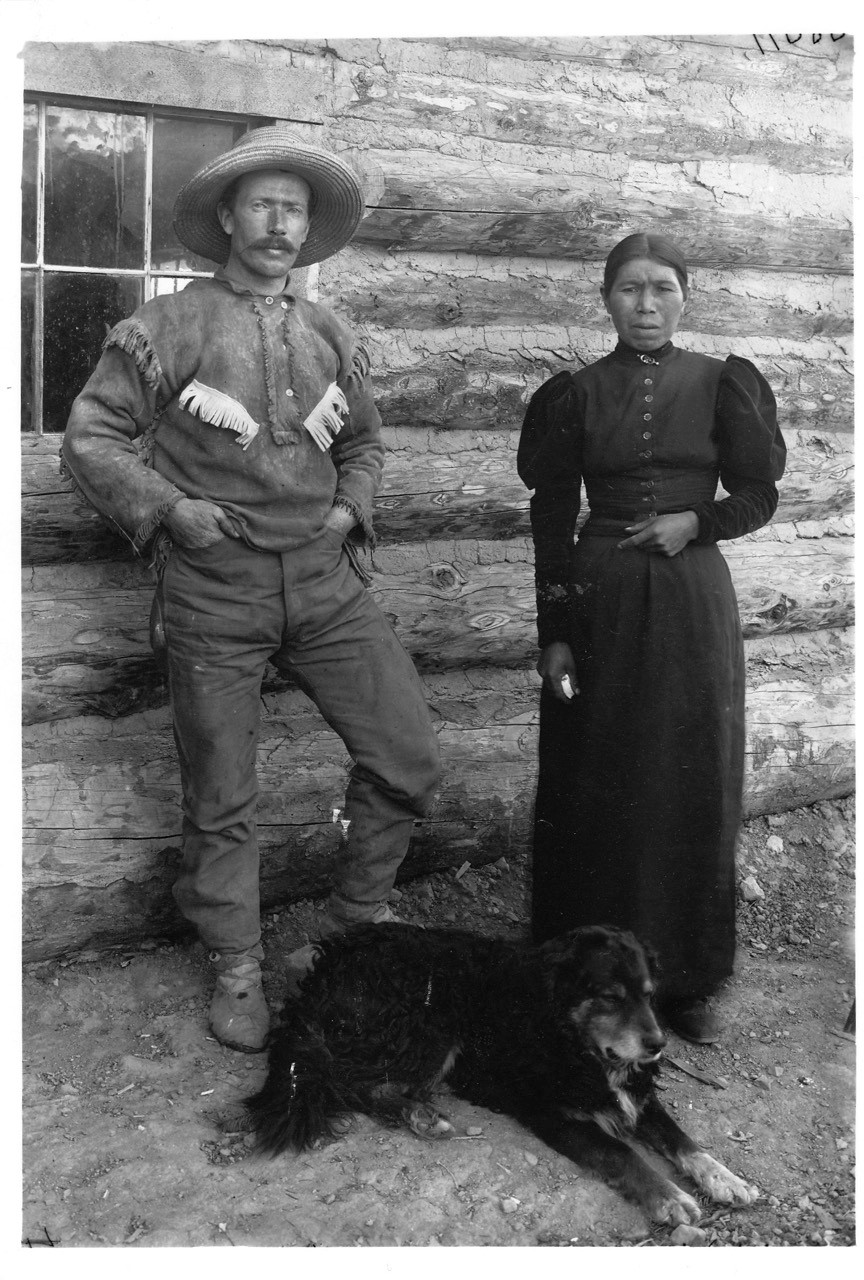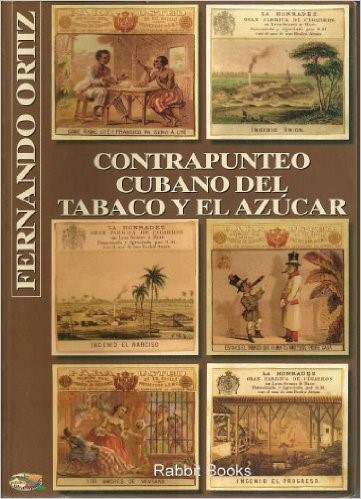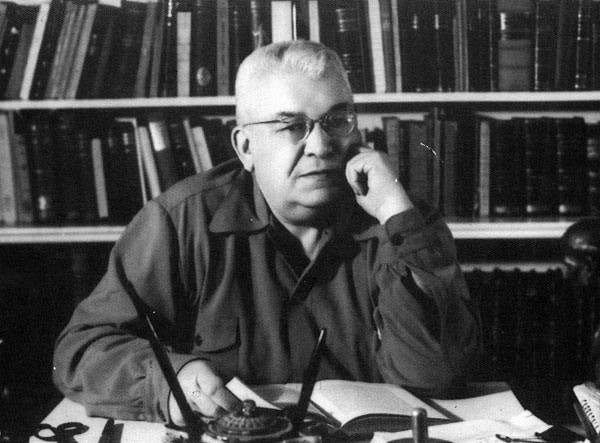Transculturation
by Stefan Krause 04/25/2016.
Summary
When different cultures meet, they influence each other. But how? In 1940, the Cuban anthropologist Fernando Ortiz introduced a concept that challenged the traditional view that cultural encounters only work in one direction. Instead he suggested that these are mutual processes during which some cultural characteristics may get lost, while new elements emerge. He termed this process ‘transculturation’. The concept has been widely applied to the study of colonial encounters and turned out to be very productive in scholarly discourse. Our project uses the explanatory power of ‘transculturation’ to analyze the (post)colonial construction of knowledge about the deep past in America. This article seeks to give an overview of the concept of transculturation. What is the significance of this phenomenon? What impact did it have on America’s history? How did people from different cultures contribute to the formation of knowledge about America’s distant past?
‘Transculturation’ is a seminal concept that has been widely used and discussed in the fields of anthropology, sociology, and postcolonial studies. The term was coined by the Cuban anthropologist Fernando Ortiz in his book Contrapunteo Cubano del Tabaco y el Azúcar (1940) “as a substitute for the term acculturation” (97). It describes the mechanisms taking place during cultural encounters.
In earlier theoretical frameworks, scholars have illustrated these encounters as rather monodirectional processes, during which one group – the less numerous and powerful one – acquires the culture of the majority society and thus becomes acculturated. Ortiz departs from the concept of acculturation – a slightly more liberal term than its predecessor ‘assimilation’ – in that he points out that cultural interaction work in both directions. They may involve “the loss or uprooting of a previous culture, which could be defined as a deculturation” (102) and eventually, the emergence of “new cultural phenomena, which could be called neoculturation” (103). Yet, in all cases, no matter how asymmetrical the power situation may be, cultural encounters are multilateral and reciprocal exchanges between members of different cultures. Scholars like his contemporary and colleague Bronislaw Malinowski, whose “instant response was the enthusiastic acceptance of this neologism” (“Introduction” lvii), supported the use of the term. But only at the end of the 20th century did the concept begin to experience a revival within the field of postcolonial studies by being reintroduced by Mary Louise Pratt who takes up Ortiz’ idea in developing her own concept of the ‘contact zone’ (see Imperial Eyes). The concept ‘transculturation’ differs from Wolfgang Welsch’s concept of ‘transculturality’ by which Welsch means the fact that the world can no longer be conceived in terms of binaries of identity and difference, or Self and Other, or “ownness” and “foreignness” (196).[1]
Ortiz explains transculturation based on the impact of tobacco and sugar on the history of Cuba, and argues that “the real history of Cuba is the history of its intermeshed transculturations” (98). Within a few centuries Cuba’s indigenous population faced the arrival of Spanish immigrants, Africans, and eventually immigrants from various countries around the globe. All of these transcultural exchanges took place in colonial or imperial contexts. Colonial trade monopolies, slavery, and repeated social upheavals suggest that these transculturations sometimes “failed” (Ortiz 100). This may be attributed to the relatively short time span of the encounters, the small intervals between them, or the large numbers of different cultures that met and clashed on the Caribbean island (Ortiz 98-100). White settlers, in particular, changed Cuba’s indigenous and Africa-descended culture and economy more than they adapted themselves; sugar mills became symbols of colonial exploitation and physical and social death. This raises the question concerning the symmetry of cultural exchange: according to which rules and to which extent are cultural traits adopted or lost?
Contexts and Criticisms of ‘Transculturation’
Processes of transculturation occur in different settings, which determine the symmetry and success of a cultural exchange. Examples from indigenous literatures and histories of the United States “encourage us not to delude ourselves about the power disequilibrium inherent in cultural exchanges, especially those taking place in colonial settings” (Jobs/Mackenthun 13). This imbalance of power relations is likely to be reflected in a similarly unbalanced cultural exchange; yet it does not contradict Malinowski’s assumption that “every transculturation is a process in which something is always given in return for what one receives, a system of give and take” (lviii-lix). Although in most colonial contexts, the asymmetrical relationship between colonizer and colonized threatens to deculturate the latter, without proportionately acculturating the former, knowledges and technologies travel in both directions. For example, white American-Europeans conquered the American West without noticeably adopting the religious, social, or economic traditions of the aboriginal population, whereas the Native people have been gradually and forcibly ‘civilized’ (i.e. deculturated and forcefully reeducated). In this case of extreme colonial violence, transculturation seems to have failed as the declared aim of the colonial education project was to reduce the indigenous population to a state of tabula rasa. Yet, viewed in historical hindsight, non-Indian societies in North America have learned their lesson from their failure to reeducate the ‘savage’. The misfired social experiment can itself be seen as an example of transcultural counter-education. In other fields, like agricultural techniques or knowledge about natural cycles and processes, non-Indians have immensely benefitted from sharing indigenous knowledge. The iconic image of the first Thanksgiving (an invention of the nineteenth century) illustrates this fact.
Further examples illustrate a possible reciprocity of transcultural interactions. In some early encounters between white explorers and indigenous people, transculturation proved to be a productive force. One of these examples is the contact between European fur traders and travelers, and the aboriginal tribes of America’s Pacific Northwest. Explorers such as the French-Canadian Toussaint Charbonneau married women from local tribes, learned their language, and adapted to their culture.[2] The language contact between white travelers and the tribes of the Pacific Northwest also led to the neocultural phenomenon of a new trading language: the Chinook Jargon – a combination of indigenous languages, French, and English. Early encounters therefore depended on the agency of ‘cultural brokers’ who were familiar with both or several involved cultures, who mediated between them, and who thereby inevitably transculturated themselves.
Transculturation and its Significance for Constructions of the Past
Transculturation is one of the driving forces of history. As Fernando Coronil explains in his introduction to Contrapunteo Cubano, Ortiz uses the concept “to apprehend at once the destructive and constructive moments in histories affected by colonialism and imperialism” (xv). Thus, transculturation is firstly a process that determines the interactions between cultures in colonial settings. History becomes more accessible when analyzed in terms of transcultural encounters. As Patricia Limerick and others have shown, the history of America, including that of the American West (which is traditionally seen in dualistic terms), has been formed by processes of cultural interactions between Native Americans, Africans, Europeans, Asian immigrants, and many others. The success of these interactions depended on mutual cultural exchange. Still, there are historical situations which seem to suppress any chance of reciprocity. For example, America’s genocidal policies during the Indian Wars of the late nineteenth century created such an imbalance in power relations that any reciprocal exchange between indigenous and American cultures was crushed by the asymmetry of the situation. Fortunately, these destructive policies did not lead to complete ‘deculturation’, i.e. the complete loss of Native American cultural knowledge and lifeways.
In a more ‘constructive moment’, transculturation can help us apprehend the various ways in which people have constructed the past. Coming back to the agents of transculturation and the area of the Pacific Northwest, we can find a corpus of knowledge that is the result of transcultural encounters. Folklorists, ethnologists, and anthropologists such as James A. Teit, Ella E. Clark, and Franz Boas have collected large numbers of oral traditions and legends of local tribes.

The willingness of these collectors to learn from the indigenous people, and the willingness of the different tribes to share their traditional knowledge, give us the opportunity to gain a more comprehensive insight into the knowledges of the Pacific Northwest. The multiple perspectives, arising from this exchange of knowledge, also shed light on those areas of the past that had been covered in scientific darkness. For example, aboriginal oral accounts are now seen as a complementary archive to complement the historical data drawn from texts on early encounters between European explorers and indigenous locals (see Cruikshank’s The Social Life of Stories), while also contributing to the exploration of environmental changes in pre-contact America (see Cruikshank’s Do Glaciers Listen?).
For our project, transculturation provides a valuable theoretical foundation for analyses of how the American past has been constructed. Both the destructive and constructive forces of cultural encounters shaped America’s history and the various perceptions of its distant past. Together, they amount to a process of transculturation and mutual instruction – even if a certain time lag was frequently involved in teaching the colonizing society that cultures are never homogeneous and that encounters never work in one direction only. Many of the ‘places’ we introduce on this website and in our other publications can be interpreted as settings of transculturation. Mount Coffin, for example, has been used by both the indigenous and white people as a landmark, as a ceremonial burial site by the local Cowlitz tribe, and as a stone quarry by capitalist companies. In the end, the story of Mount Coffin is a story about deculturation and the loss of the indigenous ceremonial site. Other articles show how transcultural discourse can be a fertile ground for the production of knowledge. Some of the ‘artifacts’ discussed by us exemplify how people with diverse cultural backgrounds construct America’s ‘prehistory’. For instance, there are different narratives about the origin of Kennewick Man: Native American tribes locate the ancient man in their own past, American anthropologists were convinced of Kennewick Man’s Asian ancestry. But when a DNA-analysis unmistakingly revealed the genetic affinity between the ancient man’s DNA and that of present-day indigenous inhabitants of the area, the world was forced to accept the tribes’ oral knowledge that holds that they had inhabited that area since times immemorial. Transcultural conflicts and mediations like these have had a significant impact on perceptions of America’s ‘prehistory’. The concept of transculturation helps to apprehend the ways in which people constructed and still try to construct the past.
NOTES
[1] For a discussion of the various concepts, see Stein, “The Location of Transculture.”
[2] One of Charbonneau’s wives, Sacajawea, famously became an important member of the Lewis and Clark Expedition and the party’s main guide and interpreter.
WORKS CITED
Coronil, Fernando. “Introduction.“ Fernando Ortiz. Cuban Counterpoint. Tobacco and Sugar. 1940. Introduction Fernando Coronil. Durham: Duke University Press, 1995. ix-lvi.
Cruikshank, Julie. The Social Life of Stories: Narrative and Knowledge in the Yukon Territory. Lincoln: University of Nebraska Press, 1998.
Cruikshank, Julie. Do Glaciers Listen? Local Knowledge, Colonial Encounters and Social Imagination. Vancouver, B.C: UBC Press, 2005.
Jobs, Sebastian, and Gesa Mackenthun, eds. “Introduction.” Agents of Transculturation: Border-Crossers, Mediators, Go-Betweens. Münster, Westf: Waxmann, 2013. 7-22.Limerick, Patricia. The Legacy of Conquest. The Unbroken Past of the American West. New York: Norton, 1988.
Malinowski, Bronislaw. “Introduction.“ Fernando Ortiz. Cuban Counterpoint. Tobacco and Sugar. 1940. Introduction Fernando Coronil. Durham: Duke University Press, 1995. lvii-lxiv.
Ortiz, Fernando. Cuban Counterpoint. Tobacco and Sugar. 1940. Introduction Fernando Coronil. Durham: Duke University Press, 1995.
Pratt, Mary Louise. Imperial Eyes. Travel and Transculturation. London/New York: Routledge, 1992.
Stein, Mark. “The Location of Transculture.” Transcultural English Studies. Ed. Frank Schulze-Engler and Sissy Helff. Amsterdam: Rodopi, 2009. 251-66.
Welsch, Wolfgang. “Transculturality. The Puzzling Form of Cultures Today.” Spaces of Culture: City, Nation, World. Ed. Mike Featherstone and Scott Lash. London: Sage, 1999. 194-213.
ILLUSTRATIONS
Figure 1: Ortiz, Fernando. Contrapunteo Cubano del Tabaco y el Azúcar. Havana: Edito Cuba España, 1999.
Figure 2: Fernando Ortiz. Source: http://www.cubatreasure.com/fernando-ortiz/ (accessed 04/27/2016).
Figure 3: Source: Smith, Harlan. 1897. “Expedition researchers took early Secwepemc photos” Shushwap Passion. http://shuswappassion.ca/shuswap/expedition-researchers-took-early-secwepemc-photos/ (accessed 04/25/ 2016).


